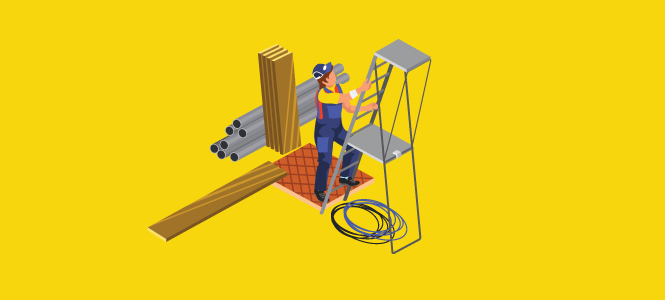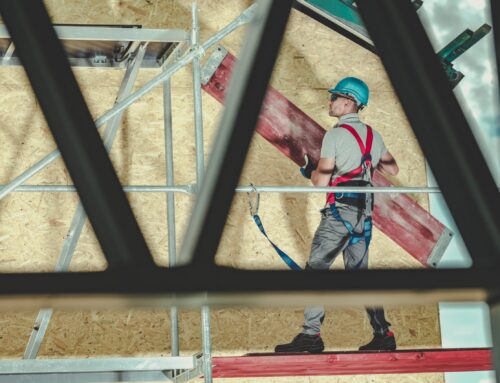Discipline has gotten a bad rap. In the workplace setting, those who decry discipline include both the administrators who should be dishing it out and representatives of employees who should be receiving it. The end result is that discipline often doesn’t get imposed even when it’s richly deserved. And in the realm of health and safety, absence of discipline is a recipe for disaster.
The Discrediting of Discipline
Once upon a time, discipline was lauded as a fundamental value. In some cultures, it still is. So why has it become such a bugaboo for us? After all, we would all agree that lack of discipline is a bad thing. So why have so many of us become unwilling to use it?
Discipline is unpleasant. But we need to remember that its value is as a means to a larger end. When you think of discipline in this way, it doesn’t seem so bad. Webster’s defines discipline as: “Training that is expected to produce a specific character or pattern of behavior, especially training that produces moral or mental development.”
Isn’t safety largely about human behavior? What about all those behavior-based theories? We should be prepared to discipline those who don’t exhibit the right behaviors as a way to help them improve. Discipline thus becomes not only not cruelty but an act of kindness and one that’s essential to the well being of the individual and all of the other persons in the workplace.
Using Discipline Right
Discipline is a good thing when you couple it with correction and encouragement. In this way, the act of disciplining serves to change behavior for the positive.
When you see somebody at your facility doing what he’s supposed to do, like wearing safety glasses, walk up to him and say: “Hey Joe, I’m really glad to see you wearing your safety glasses. You’re setting a really good example for everyone around you!” In addition to making Joe feel like a million bucks, you’ve reinforced his positive behavior and encouraged him to repeat it not just with regard to safety glasses but in general behavior. When people taste positive feedback, they generally crave more.
At the end of the year, supervisors are evaluated based on completion of positive safety-related activities, not on their incident rate or lost time accident rates. The goal incentives I’m referring to include things like conducting monthly safety meetings, filing incident reports within 24 hours of an incident, correcting unsafe acts and conditions, checking fire protection equipment weekly, etc.
Stages of Discipline
If society is to function, there need to be consequences for infractions. Doing discipline right is largely about selecting the appropriate consequences. Stated simply, the punishment-from the electric chair to the slap on the wrist-must fit the crime. Within the workplace context, the typical way to impose discipline is to do it in stages. The stages of what’s generally called progressive discipline include:
The mildest form of discipline involves forgiving the individual after reproaching him for the unsafe act and warning him not to do it again. In many cases, individuals will learn from their mistakes and not make them again.
Methods of Imposing Discipline
The delivery of discipline is often just as important as the choice of punishment. Praise in public, punish in private. This preserves the employee’s dignity and minimizes fallout among other employees. Of course, some employees may want to tell their co-workers that they’ve been disciplined. That’s their choice. But we as safety professionals are bound to not talk about others in front of employees.
Another piece of advice is to consider the entire situation. Remember that discipline is a means to an end, not an end in itself. The goal is to correct bad behavior and ensure it doesn’t happen again. Consider that sometimes the natural consequences of the bad behavior are enough to accomplish that goal.
For example, an employee who doesn’t wear her goggles to break a line might end up getting sprayed in the face with caustic chemicals. The facial burns she suffers as a result are essentially a natural form of discipline. The employee has learned the lesson of what happens to those who don’t wear goggles and suspending her for the violation might be just an unnecessary form of piling on.
Another essential part of workplace discipline is to document the action in case the employee challenges it in court or arbitration. The task of documentation should be carried out by line supervision and management, not the safety director.
Yes, Virginia, You Can Fire an Employee
Punishment for its own sake is unproductive and cruel. The ultimate goal of discipline is to promote the right behavior. It’s to bring employees back into obedience. That’s why it’s generally not a good idea to terminate an employee for a single offense (unless, of course, the offense is so serious that it’s beyond toleration).
However, if an employee who’s been disciplined for breaking safety rules persists in committing infractions, you must be prepared to dispense the ultimate punishment. Understand that everyone-and I mean everyone-is expendable. The employee that you can’t afford to fire does not exist. Of course, you hope it never comes to that, especially with your best employees. But a pattern of disobeying safety rules can result in injury, illness or death-to the employee and co-workers. And this simply cannot be tolerated.






